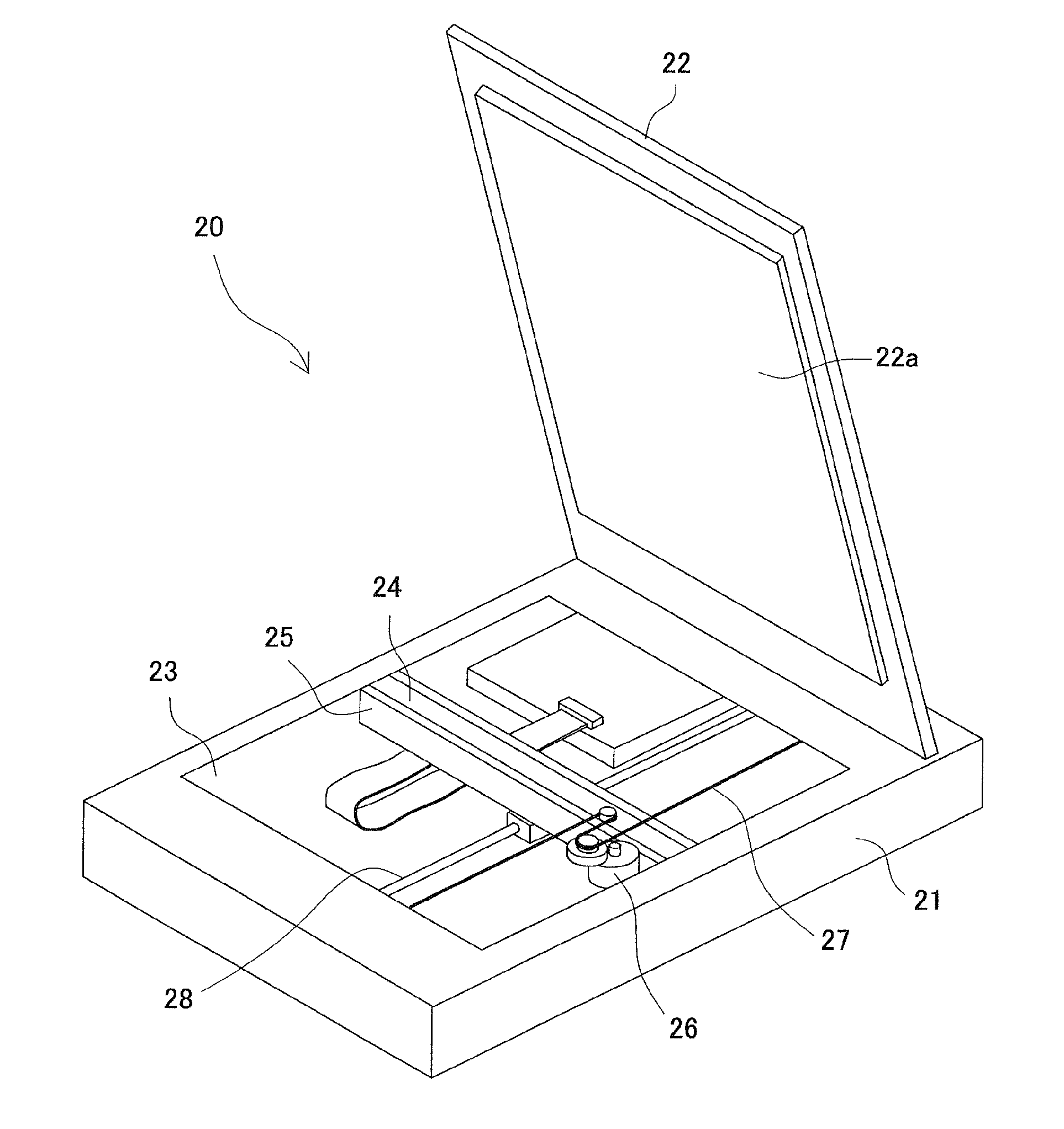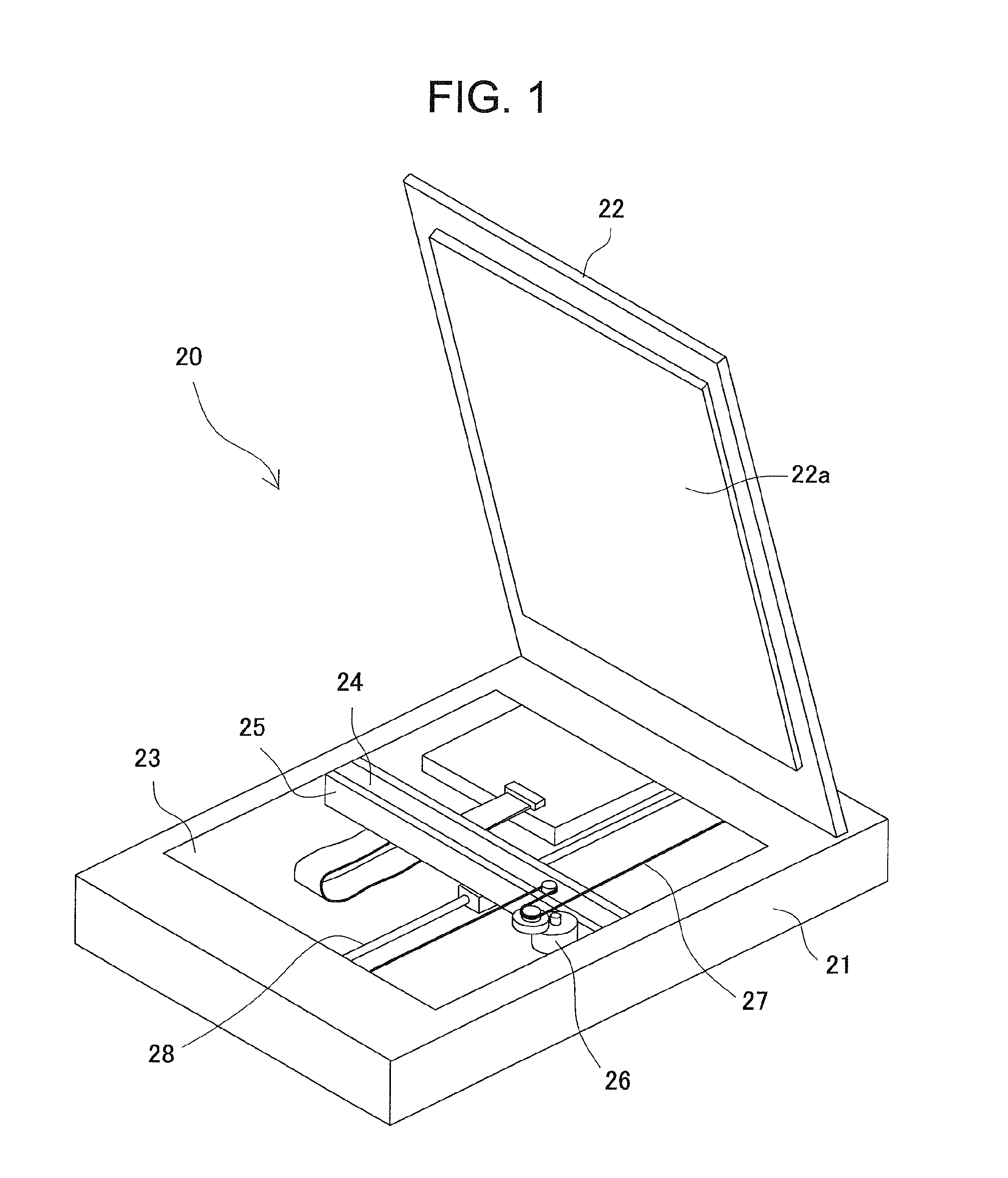Image sensor unit and image reading device
a technology of image sensor and reading device, which is applied in the direction of instruments, lenses, radio frequency control devices, etc., can solve the problems of reducing the image reading performance, affecting the reading or outputting of images by cis, and affecting the reading of images, etc., to achieve accurate and easy positioning, stable, and excellent output image
- Summary
- Abstract
- Description
- Claims
- Application Information
AI Technical Summary
Benefits of technology
Problems solved by technology
Method used
Image
Examples
Embodiment Construction
[0034]Hereinafter, a preferred embodiment of the present invention will be described in detail with reference to the accompanying drawings.
[0035]FIG. 1 is a schematic perspective view of an image scanner on which an image sensor unit of a preferred embodiment of the present invention is mounted. An image scanner 20 of the present embodiment is an image reading device of a flatbed type. The image scanner 20 includes a main body 21, which is substantially in the shape of a rectangular box, and a platen cover 22, one end of which is mounted on the main body through a hinge (not shown) in such a way that the platen cover 22 can be freely opened or closed.
[0036]The may body 21 includes a platen glass 23, which is a large rectangular transparent glass plate fixed on an upper surface thereof, and a contact-type image sensor unit 24 of the present invention. On an upper surface of the platen glass 23, a to-be-read document is placed with a document surface thereof down. When the platen cove...
PUM
 Login to View More
Login to View More Abstract
Description
Claims
Application Information
 Login to View More
Login to View More - R&D
- Intellectual Property
- Life Sciences
- Materials
- Tech Scout
- Unparalleled Data Quality
- Higher Quality Content
- 60% Fewer Hallucinations
Browse by: Latest US Patents, China's latest patents, Technical Efficacy Thesaurus, Application Domain, Technology Topic, Popular Technical Reports.
© 2025 PatSnap. All rights reserved.Legal|Privacy policy|Modern Slavery Act Transparency Statement|Sitemap|About US| Contact US: help@patsnap.com



